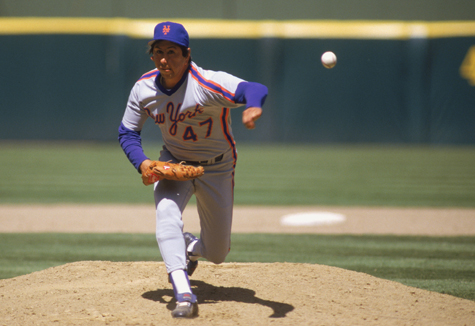
As we celebrate the 30th Anniversary of the 1986 Mets Championship Season, we’re going to roll out a special retrospective piece every Sunday to relive some of those moments from that memorable and magical season. Enjoy!
Championship seasons are invariably marked by certain games and plays that are later tabbed as “turning points” for posterity. For the 1986 edition of the New York Mets, their turning point may well have occurred in only the 6th game of the season when, after winning their first two contests but dropping the next three, the team sat a game under .500.
Although another 157 games remained to be played, many fans and even tabloid back pages cried out: “What is wrong with the Mets?” The answer of course, was nothing, and they set about proving that by winning their next eleven games and seven of the next eight after that on their way to finishing a gaudy 21½ games in front of the runner-up Philadelphia Phillies for the division title.
But there are also games that seem to be indicative of some kind of destiny intended for a team. When it appears in retrospect that a team was destined for greatness, the games that stick out are the type where a win that seemed wholly improbable at one point was captured either through perseverance, dumb luck, a managerial gamble, or some apparently mysterious force. Such was the case when the Mets met up with the Cincinnati Reds at Riverfront Stadium on the night of July 22 of that memorable year.
The Mets were down to their last out in the top of the ninth inning, trailing 3-1 as Keith Hernandez faced John Franco with the tying runs on base. Hernandez lifted an easy fly to right that looked to be the last gasp for the Amazins’ as the Reds’ Dave Parker settled under it. But in a stunning turn of events, Parker dropped the easy chance and the runners scurried home to tie the score. Given second life, the Mets began a tenacious and somewhat outre’ extra-inning odyssey.
A combination of factors including the use of three pinch hitters, a double switch, and an ejection (Darryl Strawberry in the 6th for arguing a strike call) had left the Met bench bereft of options for manager Davey Johnson. As the game moved into the bottom of the 10th, Johnson brought in Jesse Orosco as the fifth Met pitcher of the evening. It was at this point that an element of strangeness began to pervade the proceedings.
After Parker was retired for the first out, Pete Rose, then player/manager of the Reds, inserted himself as a pinch hitter and singled. He then reverted to straight managerial mode and brought in Eric Davis to pinch run. Davis promptly stole second and then went for third on a subsequent pitch. His hard slide brought him into contact with Mets third sacker Ray Knight who responded with a bit of contact of his own.
A shoving match ensued along with some words being exchanged and before you knew it, Knight’s Golden Gloves instincts had led him to pop Davis right in the kisser. The result was your standard bench-clearing bedlam, and when order was restored, two players from each team were ejected including Knight, Davis, Reds pitcher Mario Soto and Mets RF Kevin Mitchell who had been inserted to replace Strawberry. This left the Mets without sufficient position players to field a full team as the only remaining bench asset at this point was backup catcher Ed Hearn.
Having conferred with his coaches and remaining eligible players, Johnson elected to shift Gary Carter from behind the plate to third base replacing Knight and inserted Hearn at Catcher. The outfield was another matter entirely.

Anticipating the probability of needing a right handed arm to spell Orosco if the game continued much beyond the current inning, Johnson inserted reliever Roger McDowell in RF and initiated a strange merry-go-round of pitchers and outfield alignments to compensate for the Mets’ suddenly shorter bench.
As different Reds players came to bat, Johnson would shift either Orosco or McDowell to the mound based primarily on whom he felt could best induce the batter to hit the ball to an established outfielder if solid contact was made (at this point, Mookie Wilson and Lenny Dykstra comprised the other two thirds of the outfield).
As the game wore on, players were shifted repeatedly as Johnson managed to dodge situations where his pitcher/outfielders would actually have to figure in a defensive play. By way of contrast, one of his other displaced troops sparkled in the bottom of the twelfth when, with two Reds on base and none out, emergency third sacker Carter figured in the middle of a nicely turned double play to end the threat.
In the bottom of the thirteenth, Tony Perez stepped to the plate seemingly intent on exploiting the Mets’ compromised defense. Looking for a pitch he could drive the other way, he swung at a McDowell offering and lined a shot to right field where Orosco was stationed. Jesse made a quick lateral move and snagged the liner, unable to suppress a smile at the seeming absurdity of it all.
Finally, in the top of the fourteenth, Howard Johnson provided the coup de grace with a long three-run bomb off pitcher Ted Power and McDowell finished the Reds off for a 6-3 victory. In retrospect, the result of this game seemed almost inevitable, as the Mets of that season were a juggernaut that apparently could beat you with one outfielder tied behind their back.















